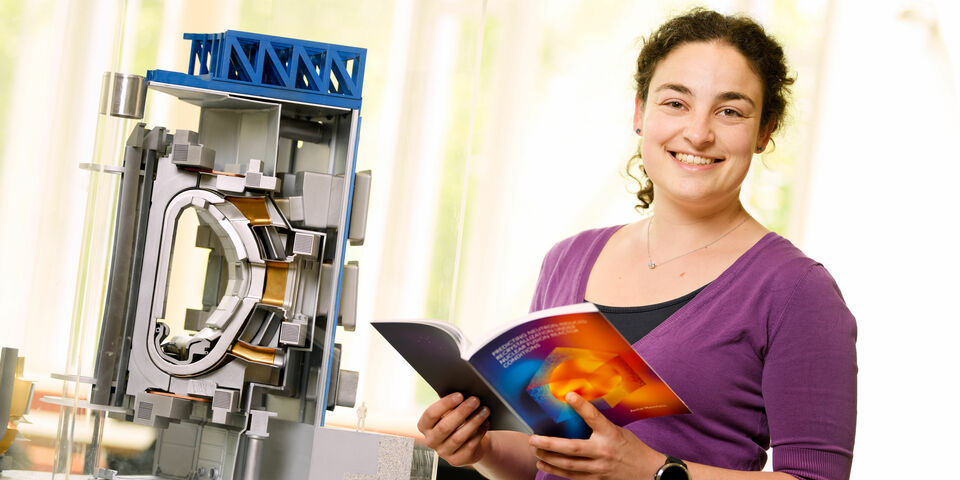Home Stretch | Servicing the fusion reactor’s exhaust
The conditions inside a nuclear fusion reactor are punishing; so the exhaust on a reactor like this has to be pretty robust. Doctoral candidate Awital Mannheim studied how a bombardment of neutrons damages the lining of the exhaust, and devised a solution that allows for the interim 'repair' of the walls.
In developing nuclear fusion reactors the most problematical stage is probably the divertor. Here, the red-hot plasma mixture that serves as fuel is repeatedly purified and reinjected before leaving the reactor once the fusion reaction has taken place. As the reactor's ‘exhaust pipe’, the divertor is exposed to a bombardment of thermal radiation, ions and neutrons - enough to make insufficiently heat-resistant material melt or even evaporate in the blink of an eye.
The exhaust pipe on test reactor ITER, which is currently under construction in Cadarache in the south of France, is therefore clad with some two hundred thousand blocks of tungsten. Each of these metal cubes is about a centimeter in diameter and cut through with a pipe carrying coolant to discharge the heat. It is no accident that tungsten has been chosen: at 3422 degrees Celsius, its melting point is the highest of all the elements.
Neutron radiaton
How this cladding will perform under such extreme conditions cannot possibly be tested in practice. Theoretical models and computer simulations therefore play an important role. In view of this, as a doctoral candidate at Mechanical Engineering, Awital Mannheim applied herself to modeling the effect of neutron radiation on the tungsten cladding. “The impact of the ions in the fusion plasma on the surface of the wall is being tested experimentally here on the campus at DIFFER,” she says. “But neutrons behave very differently; they penetrate deep into the material and cause defects in the metal grid.”
These defects make the metal more brittle, Mannheim explains. “For metals, this is often desirable, because brittle metals are harder. But the neutron radiation will probably make the tungsten exhaust cladding too brittle.” Because a little more flexibility in the cladding is preferable to its being brittle (in other words hard but fragile), the constant bombardment by neutrons is potentially a serious problem - replacing the exhaust prematurely will cost hundreds of millions of euros. “But I have also shown that targeted heating of the cladding can extend its lifespan.”
Repeated repairs
This is because the heating gives rise to a process called recrystallization. “Tungsten is what we call polycrystalline, meaning it comprises countless crystalline grains, each with its own orientation.” When in those grains too many atoms have been knocked out of position by neutrons, it becomes advantageous to reconfigure the damaged grains into a new crystalline structure. “But to do this an energy barrier has to be surmounted. According to my calculations, this can be achieved with a thermal treatment. For example, an hour's heating after every 500 hours of nuclear fusion.” In this way, the material is repeatedly repaired between more thorough overhauls.
Mannheim hopes that future fusion projects will act on her recommendation. “Greg De Temmerman, head of materials research at ITER, was a member of my doctoral committee and he was certainly very interested in the potential of thermal treatment. It seems likely that experiments will be set up to test it in the field; something we didn't manage to do during my project.”
Chip-making machine
Personally, she will no longer be involved; as she says, she is due to start work as an overlay analyst at ASML, which builds machines to produce computer chips. “I'll need to have a helicopter view of the entire chip-making machine. Like a nuclear fusion reactor, that is a highly complex device in which work is carried out under extreme conditions. And in my new job I will need to analyze large datasets, as I did during my doctoral study. So there are plenty of similarities.”


Discussion